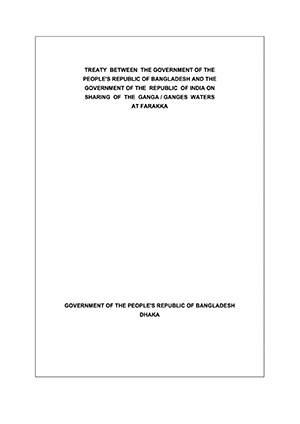Treaty Between the Government of the People's Republic of Bangladesh and the Government of the Republic of India on Sharing of the Ganga/Ganges Waters at Farakka
The Ganges-Brahmaputra-Meghna mega-basin is the second largest hydraulic region in the world, and one of the most densely populated regions. Within this basin, 54 rivers cross the border between upstream India and downstream Bangladesh. Only one, however, is subject to a bilateral agreement between the two countries: the Ganges River.
The Ganges Treaty between India and Bangladesh is an agreement to share surface waters at the Farakka Barrage near their mutual border. But the treaty, which was signed in 1996, divides water flow without sharing the value and uses of the river between the two countries. It does not even take into consideration the uppermost riparian, Nepal, meaning that it takes neither a whole-of-basin approach to river management, nor does it factor in the effects of upstream use of the Ganges on water availability at the Farakka Barrage.
The Ganges Treaty illustrates that a legally binding agreement is not the same as meaningful cooperation between the parties. The treaty favors the hydro-hegemonic state (India) and solidifies the status quo. It does not create a community of interest in the shared management of the river and has left Bangladesh with numerous concerns and unresolved issues.
